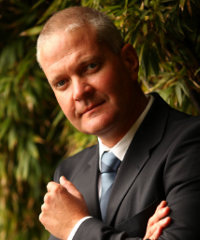Thinking outside the box to finance Africa’s small-scale farmers
Last week’s African agribusiness conference in Cape Town, entitled ‘From subsistence to commercial agribusiness: the challenge of Africa’, heard the subject of financing small-scale farmers come up repeatedly. While Africa holds 60% of the world’s uncultivated arable land, farming on the continent is limited by various challenges, and access to financing sits high up on the list. But why?
According to Zhann Meyer, the Africa head for global commodity finance at Nedbank Capital, farmers across the world can usually use their land as collateral to access finance. However this traditional model of financing farmers is not usually possible in Africa.
“Why doesn’t that work in Africa? Because land ownership is doubtful,” Meyer said at the agribusiness conference. “In most cases it’s a lease… You can’t use the land as security. So now you need to look at the crop; look at the intrinsic value of what has been growing and you need to protect that.”
Using crops as collateral to get a loan from a bank can be risky for both the farmer, who can lose everything in a poor harvest, and the bank, which needs to ensure they get their loan repaid. “What we found – and I’ve been doing this for 14 years now and there are models that work – is to group farmers into a collective repayment unit,” suggested Meyer. “Basically a small cooperative, if you will, but there needs to be an obligor. In other words there needs to be a vehicle or a body with legal responsibility that I can go and chase after if I don’t get my crop back or I don’t get repaid the loan.”
Meyer told How we made it in Africa that financing smallholders in the African environment often requires thinking outside the box.
“If one could group those farmers together and maybe get them to actually create equity into a company or a vehicle, it would allow a bank to look at [financing them] a lot more favourably.”
He added that assessing each individual farmer individually for financing would be a lot more difficult to do. “We would rather look at them as a grouping and assist them on a total cash flow and liability perspective, rather than on the individual farmer and his own individual cash flows and constraints,” explained Meyer. “So I would say that would maybe be an enabler to make it easier to fund these farmers.”


